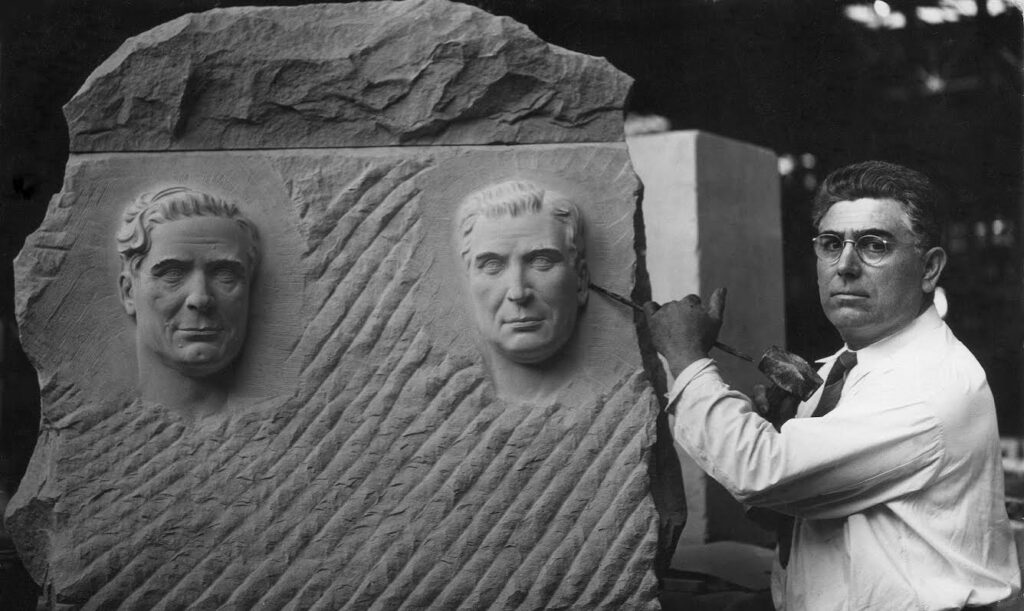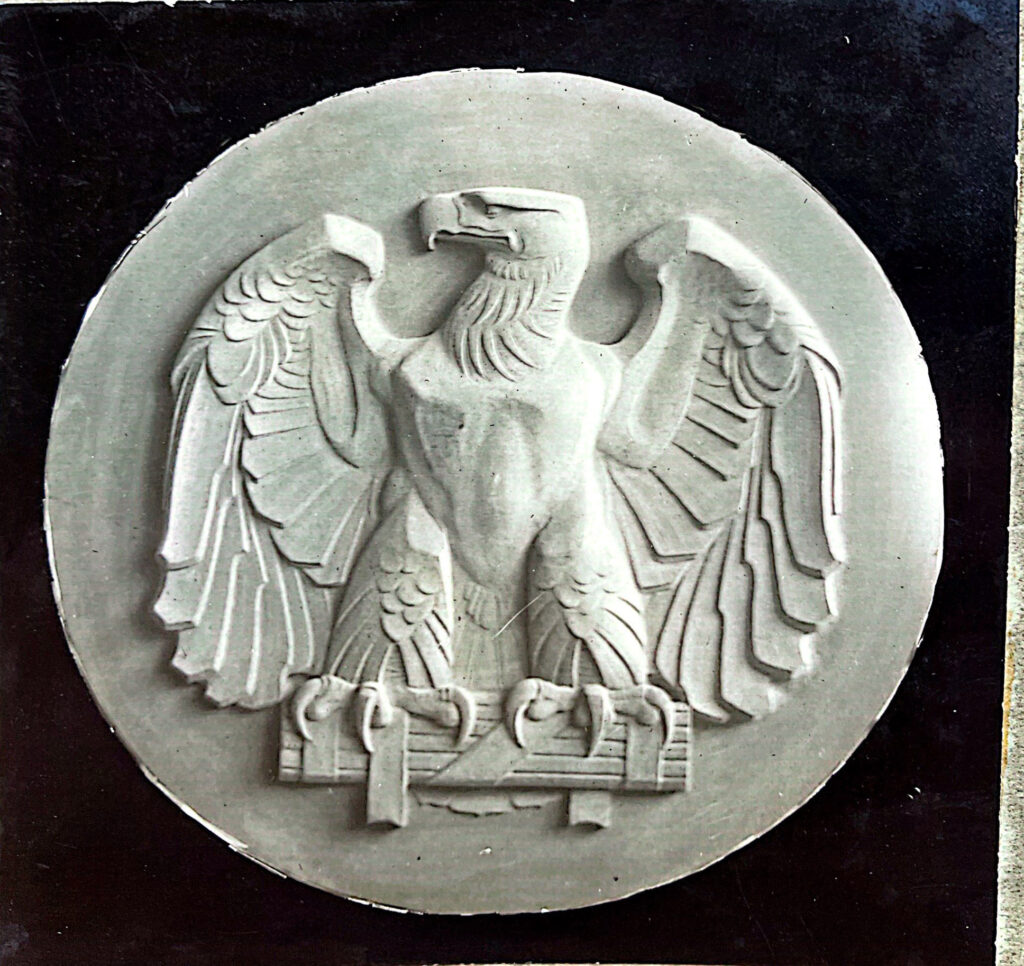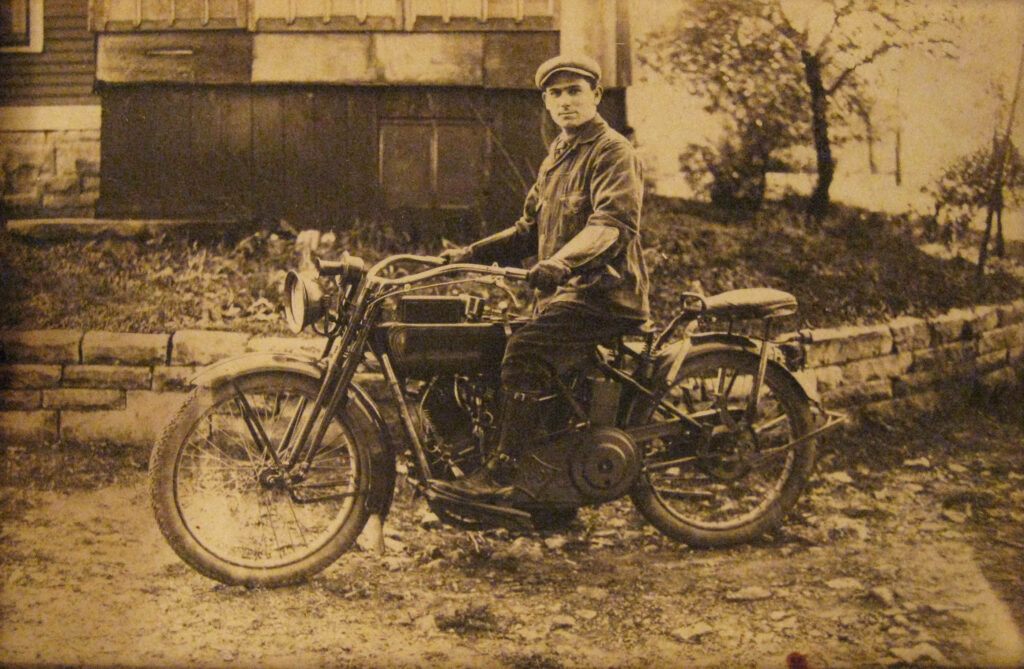
Constructed of Deer Island granite, Indiana limestone, and marble, we know about the architects of the Worcester Memorial Auditorium, but we don’t often have the chance to learn more about the skilled artisans who helped build it.

Well, luckily for us, history lovers have a way of finding each other. Over the summer, we received an email from Justin van Deursen, who told us that his great grand uncle, Enrico Liva, an Italian stone carver, had carved several of the decorative panels that grace the exterior of the Worcester Memorial Auditorium. Van Deursen has been researching and writing a biography about his stone carving ancestors, when he came across a reference to the Auditorium. After examining the building on Google Street View, he realized he had at least 6 photos of the carvings that his great grand uncle made for the building in his studio in Bedford, Indiana. Justin generously shared these images, as well as more information about Enrico Liva, which we have shared below with permission.

With a building as large and impressive as the Auditorium, the exterior details add to the overall impression, but don’t always get their due. Taking in the giant Classical Revival structure, we see the massive Doric columns and a decorated frieze, but how often do we really stop and pay attention to the details?

Seeing these images from Liva’s stone carving studio brings these figures into focus and shows us how incredibly intricate they are, and how skillfully they were made. Can you spot where the carvings show up on the building’s front facade?
We are so thankful to Justin for taking the time to share these images and this fascinating family history with us. We look forward to learning more about Enrico Liva and his family in the future!

ENRICO G. LIVA was the tenth of eleven children of Giusto Liva and Margherita Visentin Liva, born in Savona, on the coast of Italy, on August 24, 1889. His father and five brothers were sculptors, painters and ornamental plaster artists whose work brought them to various places in Europe including Norway, Russia and Sweden, as well as a variety of cities in Italy. “Harry” received his grammar and fine art education in Palermo, Sicily, under Professor Francesco Crocivera, while his family was producing architectural embellishments for the Teatro Massimo opera house. He moved to New York in 1904 and obtained a card in the Journeymen Stone Cutters’ Association the following year. Per the Encyclopedia of American Biography, 1934, his career involved working for Williams Stone Company in the Bronx, NY and Gilbertson Stone Company on Long Island. He married Maria Assunta Zito (1890-1977) in Hoboken, NJ in 1910.
Harry’s family remained on the East Coast, but on July 1, 1911 he began working for the Charles C. Ingalls Stone Company of Bedford, IN. His first project was to carve stone on-site at the newly constructed Rice Hotel in Houston. He stayed with Ingalls Stone Company for the rest of his career and worked as a designer, architect and head of the stone carving department. He was one of the first two Italians in the stone belt, which supplied limestone to major construction projects through the building boom of the 1920s and onward. He retired after 33 years as chief carver, with 22 men working for him. He had the longest tenure in the company’s history, only surpassed by his son, Luigi Liva (1910-1989), (also known as Louis or Gigi) who worked for Ingalls for 34 years, mostly under his father’s leadership. Their work can be found throughout the country.
Harry worked tirelessly and continued with projects in his home studio in Bedford after work each day and volunteered his skills for organizations he cared about. He was considered one of the foremost carvers in the stone belt and was able to turn down commissions such as carved panels for the U.S. Senate chamber in Washington, D.C., because he would have been away from his family for too long. Highlights of his career include the Shrine of the Little Flower in Royal Oak, MI, Kirk in the Hills in Bloomfield Hills, MI, the Chrysler Building in New York, the Gettysburg Address text panels at the Lincoln Memorial, Archives Building in Washington, DC, Scottish Rite Temple in Kansas City, Duke University Chapel, Masonic Temple in Waco, TX and the Stephen Foster Memorial in Pittsburgh, among many others.
Harry and Maria had six children; Luigi “Louis”, Emil, Gilda, Aurelio, Adele and Margherita.
Harry died April 30, 1963 and is buried with his beloved wife in Cresthaven Memory Gardens in Bedford, IN.